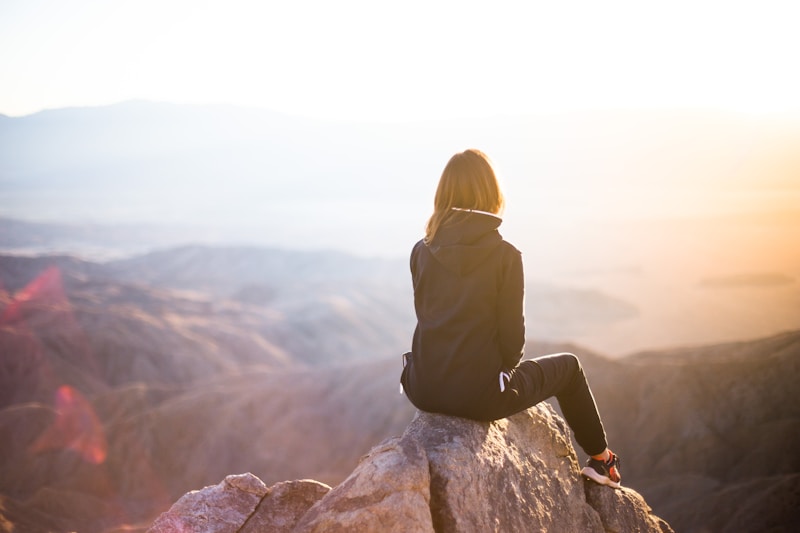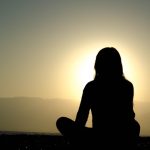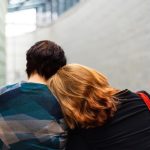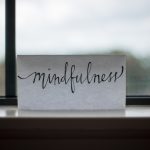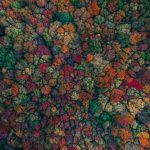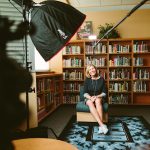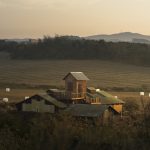Kallie Schut has a voice and she’s not afraid to use it. Through her role as a yoga teacher and her website Rebel Yoga Tribe, she is calling out cultural appropriation, racism, homophobia, misogyny (and all those intersections) where she sees it. And it seems that, now, people are starting to listen.
1. What is your experience of practicing yoga?
I’ve practiced yoga for 35 years – it’s part of my culture and family tradition. I was quite old when I started attending classes in community centres and gyms and I noticed that everyone was white and I somehow felt that the teachers didn’t want me there, although maybe I did occasionally roll my eyes at some mispronunciations.
Being in a brown body, there were racial undertones, but the microaggressions were very subtle. I think it was because there was a colonial perception – yoga was exotified, it was seen as chic and trendy and global. For example, there was once a white yoga teacher who’d just come back from a retreat and was all dressed up in my traditional dress. She was decked out in the clothing and bindis that my relatives wear – the clothing that I myself had had to reject to avoid being called racial slurs growing up.
2. What prompted you to become a yoga teacher?
I did my yoga teacher training in India, as I felt I needed to be qualified to critically challenge the yoga world. I had got to the point where I had started questioning myself, thinking maybe I’d got it all wrong.
But when I went to do my teacher training, I found ashrams catering to white-bodied people, mixed in with the patriarchal systems of India. This combination means that the voice of the brown-bodied female is just not heard. Black and brown bodies in the West, especially those who identify as women, don’t have any cultural or economic capital.
3. Your website is called Rebel Yoga tribe – what’s rebellious about the yoga you teach?
Why ‘rebel’? Because my voice is one of the marginalised and silenced voices. It is my dharmic purpose to create change and strive for equity and justice. I work for this in my professional life, and there’s no reason it shouldn’t be happening in yoga, especially as the philosophy of yoga is built around a call for action.
We have inherited a colonial legacy of yoga. The wealth of India was extracted and exploited and the wisdom traditions are part of that same model. Yoga was actually criminalised in 1871, and the same act outlawed a tribal people who were worshippers of Kali. In fact this is where the word ‘thug’ came from – the Hindi word means ‘thief’ in Sanskrit. My ancestral tribe was also outlawed.
I see myself as part of a movement built on my tribal sense of identity and community. Tribal life was often based on equity and collective social structures, as opposed to the top-down system of hierarchy. I am one voice in a chorus of voices.
4. How does yoga feed into your activism?
Yoga is about merging with the universal, so why is the individual story so powerful in modern-day yoga? It is self-centred and self-serving, whereas yoga should be rooted in community. I align with Mahatma Gandhi’s Quit India movement model, achieving change through non-violent means. Yoga is a powerful mechanism for change.
5. Are you optimistic about the future – can we change?
Optimism for racialised people is a moveable feast. The BLM movement has been around for a long time, but has become huge in this last year. This has been in the context of the murder of George Floyd, the racial disparities thrown up by COVID-19 fatalities, and gender-based violence – which disproportionately affects black and trans women, especially in India.
Being optimistic is also hard in the context of the recent Commission on Race and Ethnic Minorities Report [which claims that there is no systemic racism in the UK] which is effectively mass gaslighting.
For me personally, racism has affected my life from a very young age as my parents were victims of the Marshall Street riots against black and brown people moving into the area [white homeowners were lobbying the council to buy up houses to prevent black or Asian families moving in]. This area of Smethwick was actually Malcolm X’s last visit in 1965 before his assassination. No one learns this history of racial violence.
When I think about where we are now – more than fifty years later – it is hard to be optimistic. Racism is deeply embedded into the bedrock of our country and the government are reinforcing it from the top down.
But my Dharma is my driving inner force and it keeps me focused. A couple of years ago no one was listening to me, now I’m in demand as a speaker and educator, and many more people are listening to me – even doing this interview would never have happened.
6. What does your personal yoga practice look like?
I do an asana practice around five times a week, but no more than that as I don’t want to get addicted to the physical practice. My yoga is closely aligned with Patanjali’s eight-limbed yoga and I practice the yamas and niyamas and meditate using mantra and 108 mala beads. I also practice pranayama.
My yoga isn’t always on the mat, so I can be standing or on the go and feel the need to activate my energy.
My practice also depends on Ayurvedic principles and I’ll adjust my practice depending on the seasons. At the moment it’s Spring which drives my vata into excess so my physical practice is less and also slower to build kapha into my practice. My yoga is a balanced, harmonious and multi-faceted practice.
7. How have you found this year without hugs and physical contact?
I move from the heart centre, which is linked to the sense of touch, so missing hugs has been a real struggle for me this year. Friendships support and nourish me in so many ways. I had a bereavement not that long ago and at the funeral we couldn’t help but hug each other.
I’m desperate to hug my nieces and goddaughter, I’m an ancestor to them and they are the joy of my life, I really miss them all.
8. What’s your view on the Covid-19 vaccine?
I’ve had my first vaccine, mainly because it reduces the risk of harm to others, which is in line with the yogic principle of ahimsa.
9. This year has been a tough one for everyone – how can yoga help with the grieving process?
Trauma and grief have been a big part of my year. On a professional level, my day job is in the public sector working as a Team Leader for the safeguarding of children under five. So I am on the frontline of dealing with the impact of Covid-19 on this vulnerable age group. As a service we’re being traumatised by the work we do.
There is also the secondary trauma of witnessing racism and violent deaths. I have also had personal grief in my own life with the death of a close friend.
Yoga helps me to identify and recognise the impact of grief on myself and others. It starts with an awareness which helps to build a connection to grief. I sit with it and don’t deny it or turn away from it. I practice the Granthita mudra and work with mantra and pranayama and that has really supported me. I have a YouTube channel with some grief practices on there to help release grief.
The philosophy of yoga also helps with grief as we are working towards non-attachment. This isn’t denial but allowing the grief to be a part of your story, and not who you are. Grief pulsates and is sometimes more and sometimes less, but nothing is permanent.
10. What’s your goal for the next year?
Together with three other like-minded teachers we have devised a 300-hour yoga teacher training programme called Radical Darshan. It is Yoga Alliance approved, which was important for us as their certification is a passport for many.
The course is built on the principles of equity, inclusivity and diversity and it’s open to all, but I’d especially like to attract qualified yoga teachers to give them a different perspective.

